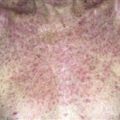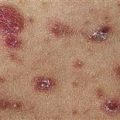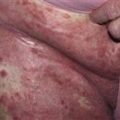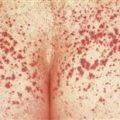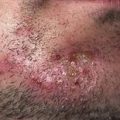160
Acanthosis nigricans
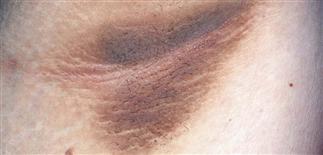
Acanthosis nigricans is a thickened velvety hyperpigmentation of flexural skin.
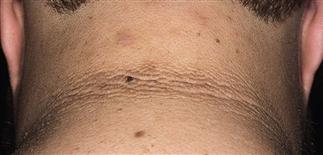
Brown velvety elevated plaque on the nuchal region, characteristic of acanthosis nigricans.
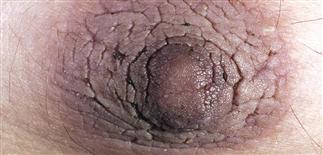
The areola can also be involved. The surface is rough, warty, or papillomatous. Darkening or hyperpigmentation is characteristic.
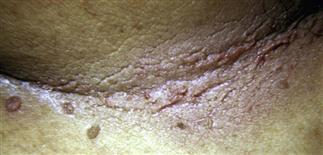
Verrucous and slightly inflamed changes of acanthosis nigricans in the flexural areas; coincident skin tags are not unusual.
DESCRIPTION
Thickened, velvety hyperpigmentation of flexural skin. Most commonly associated with obesity and diabetes. Less common associations are other endocrine disorders, medications, and occult malignancy. Acanthosis nigricans is a marker for insulin resistance.
HISTORY
• Patients usually complain of an asymptomatic, dirty appearance to the skin folds that is not removed with vigorous washing. • Usually, there is a gradual onset when it is associated with diabetes and obesity. • Malignancy-associated acanthosis nigricans develops more rapidly and suddenly. • Attempts to rub, scrub, or remove the skin changes are futile. • There may be a family history of the eruption.
PHYSICAL FINDINGS
• There is a symmetric, velvety brown thickening of the skin. • The surface is rough, warty, or papillomatous, and may look unwashed or neglected. • The axillae and posterior neck are the most common areas involved. The crural folds, beltline, dorsal fingers, umbilicus, mouth, and breast areolae are also commonly involved. • Severity varies from mild to extensive. • Usually asymptomatic. • The vulva is commonly affected in obese, hirsute, hyperandrogenic, insulin-resistant women. • HAIR-AN syndrome is hyperandrogenism, insulin resistance, and acanthosis nigricans.
TREATMENT
• Acanthosis nigricans can be caused by medications such as estrogens and nicotinic acid. Other endocrinologic disorders, such as pineal gland tumors, are possible etiologies. • The eruption is usually asymptomatic and does not require treatment. • Reducing thick lesions in areas of maceration may decrease the odor and promote comfort. • Lac-Hydrin, a 12% lactic acid cream, is applied twice a day. Retinoic acid (Retin-A cream or gel) applied each day, or less often if irritation occurs, can be helpful. • No treatment is uniformly effective at eradicating the skin changes completely.

